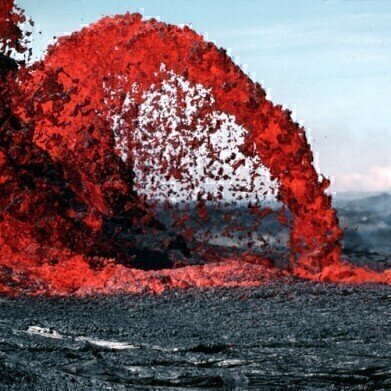LC-MS
What Did the Earth Look Like 3.7 Billion Years Ago? - Chromatography Investigates
Apr 04 2021
The Earth formed approximately 4.5 billion years ago, one-third the age of the universe, from the accretion of material in the solar nebula. It is thought that the formation was dominated by planetary collisions and melting events. The theory continues that after the moon-forming collision and event, a magma ocean was formed that went deep into the Earth.
Modelling has shown that magma ocean cooling and recrystallization could explain the initial conditions thought to be prevalent at the time. They can also explain the internal structure of the Earth’s mantle. But these theories have been difficult to test through geological observations. In a paper published in the journal Science Advances, researchers from the University of Cambridge and Carleton University, Ottawa report on a study that may have found rare evidence of magma oceans – and chromatography was there to provide the analysis.
Rocks from a magma ocean
Theories suggest that massive impacts during the formation of the Earth and Moon would have generated tremendous energy and heat. This would have been enough to melt a sizeable chunk of the Earth, certainly down a few hundred kilometres into what is now the mantle. But finding out information about this part of the Earth’s history is difficult. It happened such a long time ago that tectonic processes that have folded, subducted, and recycled material. So, any rocks over 4 billion years old have likely vanished from the surface.
The researchers from Cambridge and Ottawa have found chemical remnants of the magma ocean in 3.6-billion-year-old rocks in Greenland. The findings are reported in a paper - Iron isotopes trace primordial magma ocean cumulates melting in Earth’s upper mantle. It was the gradual cooling and crystallisation of the magma ocean that helped to set the chemistry of the Earth’s interior.
Chromatography analyses basalt
The researchers collected samples from basalt formations in south-west Greenland and using chromatography and mass spectrometry they analysed the chemistry of the rocks, particularly the isotopes of iron. The power of mass spectrometry is discussed in the article, Delivering the Power of Ion Mobility Spectrometry - Mass Spectrometry to the Point of Analysis.
The team found unusual high levels of heavy iron isotopes which are associated with older basalt rocks and go some way to supporting the prevailing theories of magma oceans. It is said that these basalt rocks from Greenland are the oldest exposed rocks on Earth. The iron isotopes convinced the team that the rocks originally derived from the cooling magma ocean. In a press release from the University of Cambridge, lead author Dr Helen Williams, from Cambridge’s Department of Earth Sciences said “There are few opportunities to get geological constraints on the events in the first billion years of Earth’s history. It’s astonishing that we can even hold these rocks in our hands – let alone get so much detail about the early history of our planet.
Events
May 11 2025 Vienna, Austria
May 18 2025 Tempe. AZ, USA
May 21 2025 Birmingham, UK
Jun 01 2025 Baltimore, MD, USA
Jun 15 2025 Bruges, Belgium














